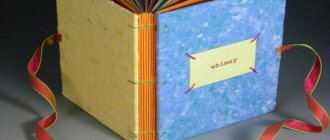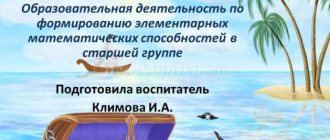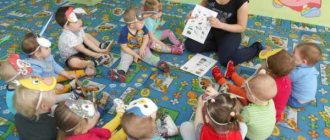Presentation “What is space?”
Svetlana Obushenko
Presentation “What is space?”
The goal is to expand children's knowledge about space
The goals are to expand children’s understanding of the diversity of space .
-expand basic ideas about space ;
-tell about interesting facts and events related to space ;
- to cultivate patriotic feelings and love for the Motherland;
-enrich the speech vocabulary with words on the topic;
-develop curiosity, logical thinking, fantasy, imagination;
space travel .
For many centuries, people have been attracted by space with its secrets and mysteries. Humanity has asked itself many questions about space to which there were no answers. People tried to understand the secret cosmos , gradually accumulating knowledge about it.
What do you think " space " is
?
(children's answers)
(1-3 slide)
Our Earth, together with its air envelope, is surrounded by an infinitely large space.
This is space .
It contains celestial bodies: the Sun, stars, planets, meteorites. (4-6 slide)
- artificial satellites -
helped people explore Today there are about 300 satellites in orbit. They serve to transmit telephone conversations, television broadcasts, and weather information around the world. Based on the satellite signal, the captain determines where the ship should sail. They help to study the Earth, the Sun, planets, stars. (7-10 slide)
Spaceships followed the satellite into . Before the first man flew into space , scientists sent various animals into the cosmic unknown.
August 19, 1960 The dogs Belka and Strelka made a flight with the successful return to Earth (slide 11-13)
space flights . of astronaut appeared . Cosmonaut (astronaut)
is a person who has completed
a space flight and conducts tests and experiments of space technology .
(14-15 slide)
The first person to fly into
outer space was Yuri Alekseevich Gagarin. This name is known throughout the World. On the Vostok-1
April 12, 1961,
USSR pilot-cosmonaut Yu . A. Gagarin made the world's first flight into outer space .
The ship made one revolution around the Earth in 108 minutes. (16 slide)
Valentina Tereshkova - the first
female cosmonaut
(17-19 slide)
Alexey Leonov is the first person to leave
spaceship and step into outer space
(slide 20)
Neil Armstrong became the first man to set foot on the moon
(21 slides)
Sergei Pavlovich Korolev - led humanity to the stars - created a rocket.
(22-23 slide)
The launch vehicle launches into orbit
a spacecraft , which is attached to the head of the rocket. And below are the stages, which have their own engines and their own fuel supply. A spaceship is both a home and a scientific laboratory. Astronauts live and work in it .
When the rocket rises to the required height and its last stage separates, the spacecraft flies on its own. It becomes a satellite of the Earth.
In the main compartment, astronauts launch from Earth . From here they control the ship and communicate with the Earth via radio. This is the only part of the ship that returns to Earth
From their cabin, through a hatch, the astronauts enter the orbital compartment.
Here they conduct scientific experiments... sleep and play sports
(26-29 slide)
In
space , objects cannot fall and break. Together with the astronauts, they freely “float”
inside
the spacecraft . This happens because a state of weightlessness occurs on spaceships , in which a person and the objects around him lose weight (become lighter than feathers)
.
(30-31 slides)
in zero gravity, food differs from earthly food. Crumbs and drops of food should not remain: they can get into the devices and damage them.
Therefore, food on the spacecraft is stored in tubes.
They are similar to toothpaste tubes, only larger in size. Food is squeezed out of them. (32 slide)
spacecraft and interplanetary stations
are controlled (33 slide)
Having completed all tasks,
the astronauts return to Earth.
Unnecessary compartments are separated and burned in the atmosphere. Not far from the Earth, a parachute opens to soften the impact of the ship on the earth's surface. Fizminutka:
Now let’s relax and play the game “ Cosmonaut ”
One-two, there's a rocket. (children raise their hands up)
Three or four, take off soon. (spread arms to the sides)
To reach the sun (circle with arms)
Astronauts need a year . (takes hands to cheeks, shakes head)
But on the road we are not afraid (arms to the sides, tilting the body to the right and left)
Each of us is an athlete (bend arms at elbows)
Flying over the ground (spread arms to the sides)
Let's say hello to her. (raise their hands up and wave)
- Here we are in space ! Do you feel weightless? You have become as light as feathers.
And now we will check which of you was the most attentive.
(34-39)
puzzles
Creative project on the theme “Space” with presentation, 2nd grade
Creative project on the surrounding world on the theme: “Mysterious space”
Several decades ago, few of yesterday's boys did not want to become an astronaut.
This dream is not at all relevant for modern children. Meanwhile, space pirates, star wars and other alien creatures are the heroes of your favorite cartoons. Interest in Space awakens in a person very early, literally from the first steps. The mysteries of the Universe always excite the imagination, from early childhood to old age. The sun, the moon, the stars are at the same time so close, and at the same time so far away. I think that each of us, including me, finds it very interesting to look at the night sky. That is why I chose the theme of the project : “The Mysterious World of Space.” Problem: Insufficient knowledge in the field of cognitive development, the history of space exploration, what is there behind the clouds of our beloved planet. Hypothesis: the most mysterious and fascinating thing in the world is space. Purpose of the work: To get acquainted with the history of space exploration. Objectives : - study additional literature; - select and organize interesting information; - provide facts that prove the mystery and wonder of space; — make visual models of the solar system. Stages of work: Preparatory stage
1. Selecting a topic.
2. Identification of questions on this topic. 3. Collection of information, its analysis and synthesis. Practical stage
1. Visit to library No. 9.
2. Analysis of the collected information. 3. Design of material, production of models of the solar system. 4. Research results Summary stage
1. Preparation and execution of the project presentation. 2. Protection of project work. 3. Analysis of the degree to which classmates have mastered the provided material.
Creative work
Layout No. 1 “Solar system”
Stages of work: 1. Print out the planets of the solar system, star background and laminate. 2. Cut out the planets and create a three-dimensional image using tape and foam plastic. 3. We arrange the planets in the required sequence. For work we used the following materials: - adhesive tape; - Styrofoam; - scissors; - laminating paper - decorative elements.
We got a very beautiful, three-dimensional image of the planets of the solar system. This layout can be widely used for educational purposes. Layout No. 2 “Solar System”
Stages of work: 1. Print out the star background. 2. Cut out a circle from foam plastic, onto which we glue a star background. 3. Model the planets using plasticine. 3. We arrange the planets in the required sequence on a starry background using toothpicks. For work we used the following materials: - glue; - Styrofoam; - scissors; - plasticine - toothpicks.
We got a very beautiful image of the planets of the solar system.
This layout can be widely used for educational purposes. In the course of our research, we found answers to many questions that interest us. We read a lot of scientific literature on this topic, studied the main stages of space exploration, and became acquainted with interesting facts about the planets of the solar system. There is so much still unexplored in the Universe! Billions of Stars and Planets. And maybe there is life on some that is at least a little similar to ours... The study of the mysterious cosmos continues! Thus, the research hypothesis was confirmed. While working on the project, I learned a lot of new things about space and the planets of the solar system, expanded my vocabulary, and broadened my horizons. The result of the work was that my classmates became acquainted with my work in class and enriched them with new knowledge. Presentation on the topic: Mysterious space
Download Creative project on the surrounding world on the theme “Mysterious Space”
We recommend watching:
Quiz game for Cosmonautics Day in primary school, grades 2-3 Extracurricular activities for Cosmonautics Day for grades 2-3 Game program for Cosmonautics Day for children 6-8 years old Quiz about space with answers, grade 4
Similar articles:
Zodiac constellations. Report, 4th grade
About the planets of the solar system for 4th grade children
Message about the Universe, 4th grade
Report about the Galaxy, 4th grade
A message about the Milky Way briefly, grade 4








